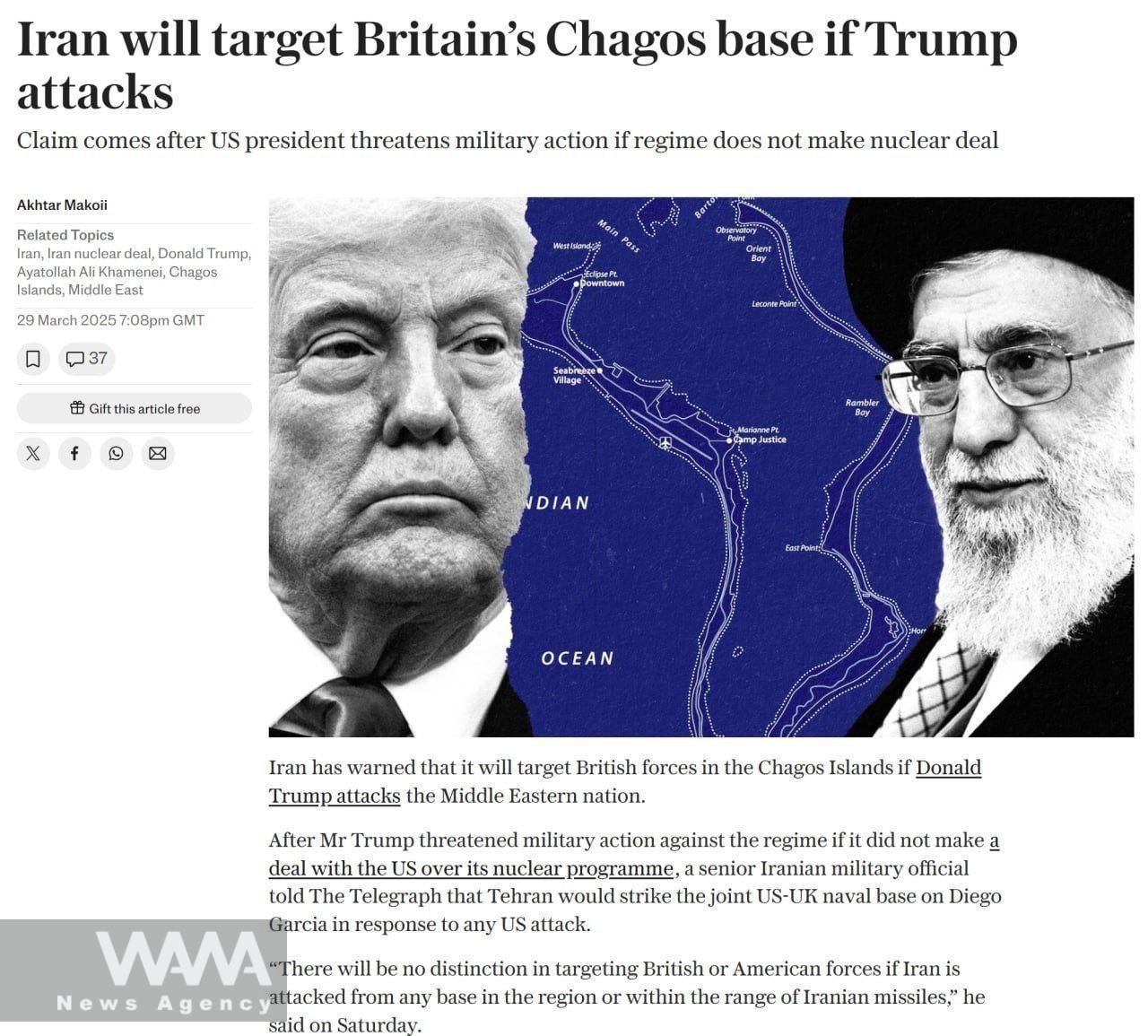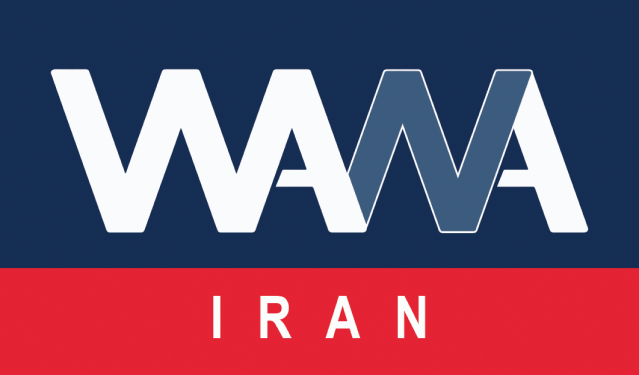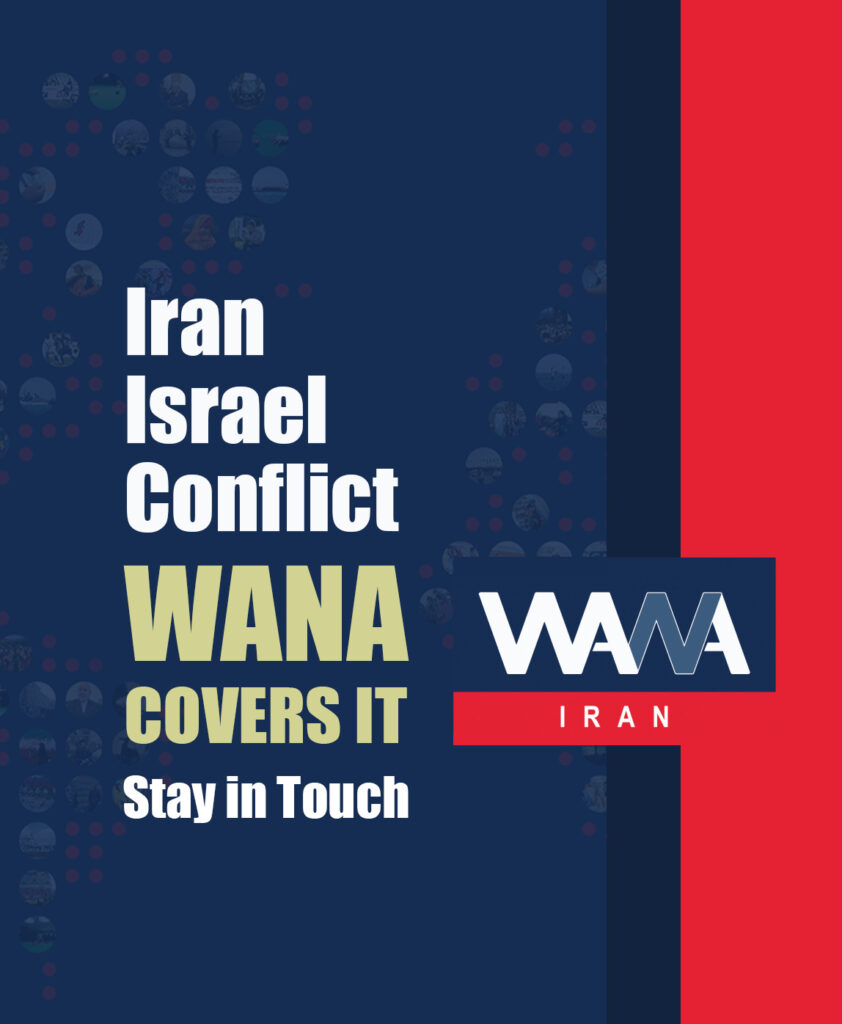Iran’s Threat to Attack Diego Garcia
WANA (Mar 30) – At a time when tensions between Iran and the United States are at their peak, reports have surfaced regarding Iran’s possible response to any U.S. military action. According to a report published by The Telegraph, citing Iranian sources, Iran has threatened to target the Diego Garcia military base, located in the Chagos Archipelago under British control, if the U.S. initiates an attack.
Diego Garcia, situated in the Indian Ocean, is a strategic military outpost for both Britain and the United States. In the past, it has served as a launching point for military operations in Iraq and Afghanistan. Now, as tensions escalate, the base could become a potential flashpoint for conflict.

According to a report published by The Telegraph, citing Iranian sources, Iran has threatened to target the Diego Garcia military base, located in the Chagos Archipelago / WANA News Agency
Iran’s Military Capability Against Threats
Iran possesses sufficient weaponry to launch such an attack from its own territory. A likely option for Iran would be the Khorramshahr-4 medium-range ballistic missile, which can carry a warhead weighing up to 1,500 kilograms. When utilized at full capacity, this missile can reach distances exceeding 4,000 kilometers.
Although Iran officially claims that the missile’s range is limited to 2,000 kilometers, it is well understood that it can reach much farther. This missile is equipped with a warhead capable of deploying 80 submunitions, each weighing 18 kilograms, allowing it to simultaneously strike 80 targets.
Moreover, Iran would theoretically require only one or two missiles to neutralize each American base in the region. With a salvo of 100 missiles, up to 8,000 targets could be destroyed.
If verified, Iran’s alleged threat to attack Diego Garcia is a direct response to warnings from then-U.S. President Donald Trump, who had declared that military action against Iran would be an option should nuclear negotiations fail.
Iran Has Not Remained Silent—It Has Taken Action
Contrary to some expectations, Iran has not remained passive in the face of U.S. threats; instead, it has taken diplomatic action. Then-Iranian Foreign Minister Seyed Abbas Araghchi confirmed that Iran had responded to Trump’s letter, emphasizing that Iran has never been and will never be susceptible to intimidation. This response was not one of submission but rather a demonstration of Iran’s sovereignty and strength.
Seyed Kamal Kharrazi, a prominent figure in Iran’s foreign policy, described Washington’s approach as “psychological warfare.” According to him, the U.S. was attempting to pressure Tehran through the false dichotomy of “war or negotiation.” However, Iran is experienced in such geopolitical maneuvers and understands how to shift the dynamics in its favor.

Is Trump Seeking a Major War with Iran?
WANA (Mar 29) – All of Trump’s military maneuvers, statements, speeches, letters, and threats are seen as part of his administration’s strategy to make its threats appear credible. Trump’s advisors have told him that simply repeating the phrase “all options are on the table” is ineffective against Iran. To make the threat of war […]
Negotiation? Yes, But Not Under Pressure
Iran’s Supreme Leader unequivocally exposed Washington’s true intentions: “They seek to use negotiations as a tool for coercion, not for resolving issues.” This statement highlights that any negotiations proposed by the U.S. are merely tactics to extract more concessions. Iran is open to dialogue, but only under conditions of mutual respect, not unilateral demands.
Diplomacy and Deterrence: Iran’s Strategy Against Threats
Iran has consistently shaped its foreign policy through a combination of diplomacy and deterrence. History shows that Iran’s decisions are based not on emotions but on strategic calculations. A prime example of this approach was Iran’s decision to negotiate after eight years of war with Iraq—an action taken not from weakness but from a careful assessment of national interests.
This strategy continues to be followed today. The Islamic Republic of Iran has not closed the door on negotiations; rather, by responding to Trump’s letter, it has made it clear that any dialogue must be conducted under terms that benefit the Iranian nation.
On the other hand, the potential threat to U.S. bases—especially Diego Garcia—sends a strong message to Washington: any hostile action against Iran will be met with a decisive and proportional response. Iran has repeatedly demonstrated its ability to negotiate, to issue warnings, and to smartly manage external pressures.
The game is far from over. Iran’s response to Trump’s letter was more than just a reaction—it was a strategy: keeping the door open for negotiations while maintaining a robust deterrence posture. This is the formula Iran has perfected over the years.
The New York Times: #Trump‘s Team Clashes with #US National Security Advisor Over #Iran
“Some of Trump’s advisors have criticized #Waltz for his inclination toward military action against Iran.
Trump has repeatedly stated that he prefers an agreement with Iran.” pic.twitter.com/KWx8dCde6i— WANA News Agency (@WANAIran) March 30, 2025













